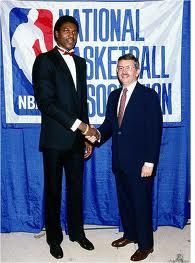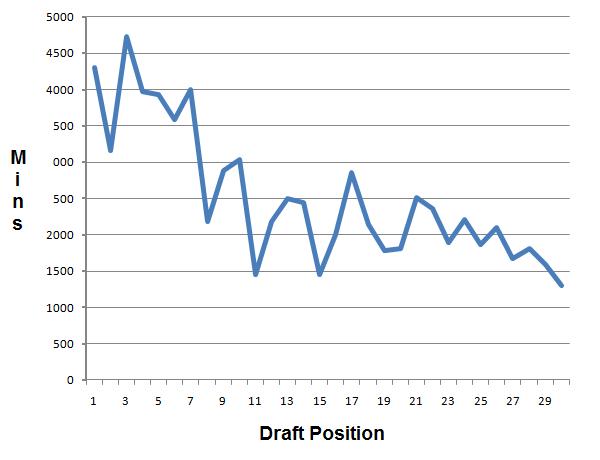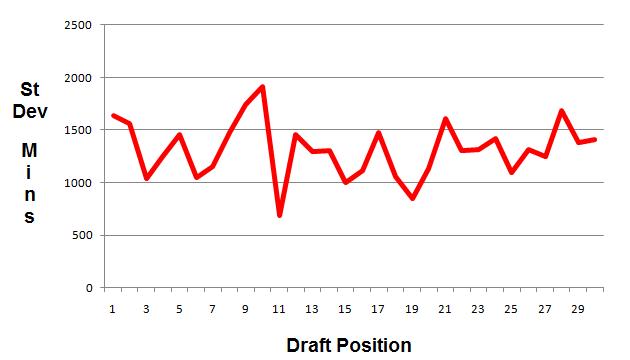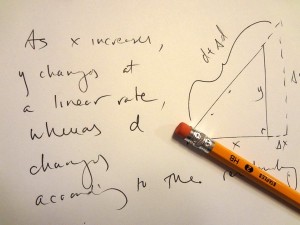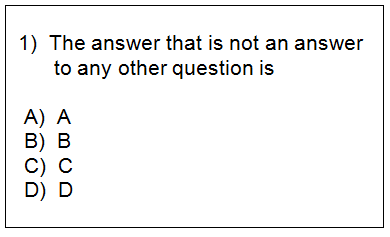After creating a simple metric to evaluate the success of an NBA draft pick, I realized that the same approach could be used to evaluate the overall strength of a draft class.
To quantify the success of an individual draft pick I’m looking at the total minutes played by a player during the first two years of his contract. As far as simple evaluations are concerned, I think minutes played is as good a measure as any of a player’s value to a team, and I’m only looking at the first two years as those are the only guaranteed years on a rookie’s contract. This is by no means a thorough measure of value–it’s meant to be simple while still being relevant.
After using this measure to compare the performance of individual draft picks, I used the same strategy to evaluate the entire “Draft class”. I computed the average total minutes per player for the entire first round (picks 1 through 30, in most cases) of each draft from 2000 to 2009. Here are the results.
There doesn’t seem to be much variation among the draft classes, but the 2006 draft certainly looks weak by this measure. Upon closer inspection, that year does seem like a weak draft: the best players being LeMarcus Aldridge (2), Brandon Roy (6), and Rajon Rondo (21). The weakness of the 2000 draft also seems reasonable upon closer inspection at basketball-reference.com.
Another approach would be to somehow aggregate the career stats of each player in a draft, rather than looking at only the first two years, but that would make it difficult to compare younger and older players.
Are there any other suggestions for rating the overall strength of an NBA draft class?
Related Posts


